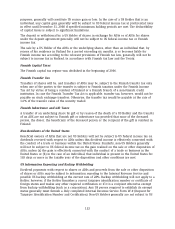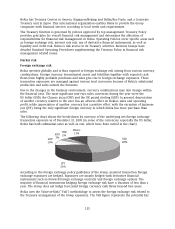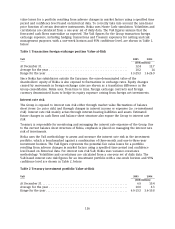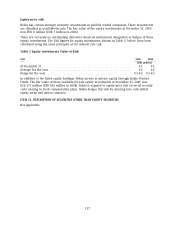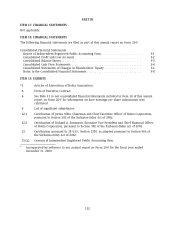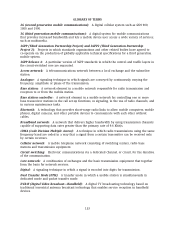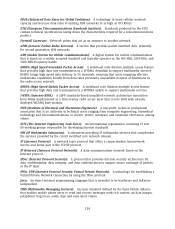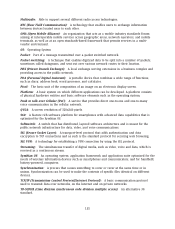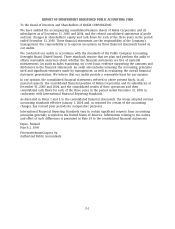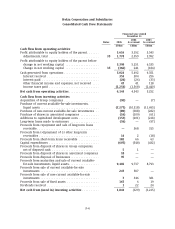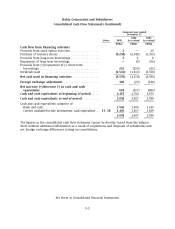Nokia 2005 Annual Report Download - page 135
Download and view the complete annual report
Please find page 135 of the 2005 Nokia annual report below. You can navigate through the pages in the report by either clicking on the pages listed below, or by using the keyword search tool below to find specific information within the annual report.GLOSSARY OF TERMS
2G (second generation mobile communications):
A digital cellular system such as GSM 900,
1800 and 1900.
3G (third generation mobile communications):
A digital system for mobile communications
that provides increased bandwidth and lets a mobile device user access a wide variety of services,
such as multimedia.
3GPP (Third Generation Partnership Project) and 3GPP2 (Third Generation Partnership
Project 2):
Projects in which standards organizations and other related bodies have agreed to
co-operate on the production of globally applicable technical specifications for a third generation
mobile system.
3GPP Release 4:
A particular version of 3GPP standards in which the control and traffic layers in
the circuit-switched core are separated.
Access network:
A telecommunications network between a local exchange and the subscriber
station.
Analogue:
A signaling technique in which signals are conveyed by continuously varying the
frequency, amplitude or phase of the transmission.
Base station:
A network element in a mobile network responsible for radio transmission and
reception to or from the mobile station.
Base station controller:
A network element in a mobile network for controlling one or more
base transceiver stations in the call set-up functions, in signaling, in the use of radio channels, and
in various maintenance tasks.
Bluetooth:
A technology that provides short-range radio links to allow mobile computers, mobile
phones, digital cameras, and other portable devices to communicate with each other without
cables.
Broadband network:
A network that delivers higher bandwidth by using transmission channels
capable of supporting data rates greater than the primary rate of 9.6 Kbit/s.
CDMA (Code Division Multiple Access):
A technique in which radio transmissions using the same
frequency band are coded in a way that a signal from a certain transmitter can be received only
by certain receivers.
Cellular network:
A mobile telephone network consisting of switching centers, radio base
stations and transmission equipment.
Circuit switching:
Electronic communications via a dedicated channel, or circuit, for the duration
of the communication.
Core network:
A combination of exchanges and the basic transmission equipment that together
form the basis for network services.
Digital:
A signaling technique in which a signal is encoded into digits for transmission.
Dual Transfer Mode (DTM):
A transfer mode in which a mobile station is simultaneously in
dedicated mode and packet transfer mode.
DVB-H (Digital Video Broadcast—Handheld):
A digital TV broadcasting technology based on
traditional terrestrial antenna broadcast technology that enables service reception in handheld
devices.
133


